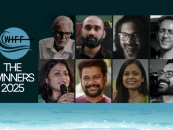-853X543.jpg)
THOUGHT FACTORY: INDIAN INDEPENDENT CINEMA’S EVOLUTION
by Editorial Desk July 28 2024, 12:00 am Estimated Reading Time: 3 mins, 39 secsExploring the journey of Indian independent cinema from the constraints of the pre-internet era to the digital renaissance, highlighting key films, the rise of documentary filmmaking, and the role of global festivals in amplifying diverse voices. The #Newsdesk reports.
The shift from pre-internet to post-internet eras has redefined storytelling, distribution, and audience engagement. Explore the vibrant world of Indian independent cinema, from the pre-internet era's parallel cinema movement to the post-internet era's diverse storytelling. Discover iconic films like "Pather Panchali" and "The Lunchbox", and witness the rise of a documentary renaissance with compelling works like "An Insignificant Man". For more insights and updates, visit The Daily Eye, your go-to resource for cinema, culture, and societal discussions. This is the perfect guide for anyone looking to dive into the nuanced and evolving landscape of Indian cinema.
Film festivals worldwide have been instrumental in giving wings to Indian independent cinema, offering a global stage for diverse storytelling. Beyond prestigious platforms like Cannes Film Festival, Toronto International Film Festival (TIFF), and Sundance Film Festival, smaller and more accessible festivals such as the Busan International Film Festival, Rotterdam International Film Festival, and South Asian International Film Festival have been crucial in showcasing Indian independent films. These events provide invaluable exposure and networking opportunities for filmmakers, often leading to international distribution deals and broader audience reach.
Contemporary documentary films and movies by young, non-mainstream filmmakers have gained significant attention through these festivals. Notable examples include "While We Watched," a compelling documentary by Vinay Shukla that delves into the life and work of journalist Ravish Kumar, highlighting the challenges of truthful journalism in India. Anand Patwardhan, a veteran documentary filmmaker known for his politically charged and socially conscious work, continues to make an impact with his films like "Reason" (Vivek), which examines the rise of religious intolerance.
11.jpg)
PRE-INTERNET ERA: CRAFTING STORIES AMIDST CONSTRAINTS
- Limited Resources and Platforms
In the pre-internet era, Indian independent filmmakers faced challenges such as limited budgets, restricted access to technology, and scarce distribution channels. Despite these constraints, filmmakers created impactful stories that often addressed social issues and depicted the complexities of Indian society.
- The Emergence of Parallel Cinema
Parallel cinema, also known as the Indian New Wave, emerged as a movement characterized by its realistic and artistic approach. This era saw the rise of filmmakers like Satyajit Ray, Mrinal Sen, and Shyam Benegal, whose films explored themes of human struggle, social inequality, and cultural identity.
Notable Films:
- Pather Panchali (1955) by Satyajit Ray: A cornerstone of Indian cinema, this film portrays the life of a rural Bengali family.
- Ankur (1974) by Shyam Benegal: A stark depiction of rural exploitation and the caste system in India.
POST-INTERNET ERA: A DIGITAL RENAISSANCE
- Democratization of Filmmaking
The internet revolutionized the independent film landscape by providing filmmakers with access to digital tools, crowdfunding platforms, and online distribution channels. This democratization allowed a new generation of filmmakers to tell diverse stories with relative ease.
- Diverse Themes and Global Reach
The post-internet era brought a surge of diverse narratives, exploring contemporary issues, gender dynamics, and urban experiences. The ability to reach global audiences through platforms like YouTube and streaming services further broadened the scope of Indian independent cinema.
Notable Films:
- The Lunchbox (2013) by Ritesh Batra: A tender love story set in Mumbai, exploring themes of loneliness and human connection. Watch Trailer
- Masaan (2015) by Neeraj Ghaywan: A poignant drama set in Varanasi, addressing issues of caste, love, and societal norms.
- Court (2014) by Chaitanya Tamhane: A powerful courtroom drama critiquing the Indian legal system and societal prejudices.
DOCUMENTARY RENAISSANCE
The post-internet era has also witnessed a renaissance in Indian documentary filmmaking, with directors utilizing digital platforms to explore and document diverse social, cultural, and political landscapes.
Notable Documentaries:
- An Insignificant Man (2016): A behind-the-scenes look at the formation of a political movement.
- India's Daughter (2015): A powerful documentary on the Delhi gang rape case and its aftermath.
Further Exploration
For those interested in exploring more about Indian independent cinema, the following resources offer a wealth of information and films:
- The Daily Eye: A platform dedicated to discussions on cinema, culture, and society, offering reviews, interviews, and analyses.
- Film Companion: A platform offering reviews, interviews, and insights into Indian cinema.
- MUBI: A streaming service featuring a curated selection of independent and classic films, including many Indian titles.
- YouTube: Many independent films and documentaries are available on YouTube, providing easy access to a wide range of content.




-173X130.jpg)
-173X130.jpg)
-173X130.jpg)
-173X130.jpg)
-173X130.jpg)

-173X130.jpg)
